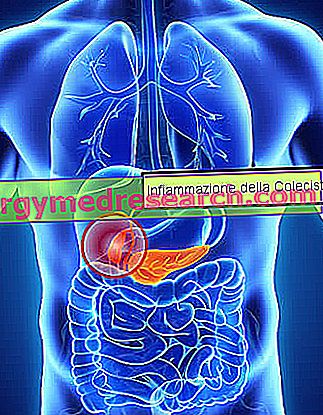History and current legislation
Beer is one of the oldest beverages, thanks to roots that date back to ancient Pharaonic Egypt; a beer that, at that time, was very different from the current one, just as the wine produced by the Greeks and Romans was far from that of our days. In both cases, in fact, the fermentations were spontaneous, while today they are strictly controlled with regard to times, temperatures, and, above all, the microbial strains used for fermentation.
According to Italian law, beer is:  |
Until a few years ago beer could be produced only from barley malt, while that of other cereals had to be declared on the label as beer of (source). Since 1998, thanks to the new legislative decree DPR 272/98, it is possible to produce beer also with wheat or with mixtures of barley and wheat; other cereals can also be used - such as rice malt, also broken or milled or in the form of flakes, as well as starchy and sugary raw materials - provided in an amount not exceeding 40%.
Pure beers, for example of only rice or only corn, must declare their source on the label (eg rice beer or corn beer). These "alternative" beers are having a remarkable success both for their organoleptic characteristics, which enhance particular culinary combinations, and because they are suitable for the celiac diet.
Chemical composition and properties
The beer consists of:
• Water: approx. 85%
• Alcohol: 3 - 9%
• Dry extract: 3 - 8%
In the dry extract we find different nutrients, such as sugars, nitrogenous substances, tannins, dextrins, B vitamins, salts and acids characteristic of malt and hops.
Beer also has a certain energy content, including - for the common one - between 30 and 60 kcal per 100ml. Unlike wine (which gives empty calories *), the energetic power of beer does not derive only from alcohol, but also from dextrins and from protein substances present in the drink. In the latter, amino acids are present in an amount of about 0.2g per 100ml of beer and, although the biological value is modest, they include all eight essentials.
Total carbohydrates (simple, oligosaccharides and short polymers) range between 2 and 5g / 100ml, with an average of 3.5g / 100ml.
* It should however be specified that beer, compared to red wine, does not have the same content in phenolic antioxidants; these molecules, in the right quantities and with the appropriate frequency of consumption, provide to moderate cellular oxidative stress and cholesterol (total and LDL) in the blood.
BENEFIT PROPERTIES
At one time a popular saying was very popular according to which: "Who drinks beer campa hundred years". This formidable slogan, separated from its miraculous tones, may not be completely absurd; beer, in fact, is a drink that brings some nutrients, including certain B group vitamins and potassium, contained in more generous amounts than sodium.
B6 (or pyridoxine) and especially folic acid are very important to neutralize the negative effects of homocysteine, an amino acid whose excess (although with mechanisms different from cholesterol) favors the appearance of cardiovascular diseases.
NEGATIVE PROPERTIES AND HAZARDS RELATED TO THE ABUSE
To be honest, as far as the vitamin aspect is concerned, beer also has the ability to compromise the intestinal absorption of various molecules; among others, B1 (thiamine), B2 (riboflavin), PP (niacin) and folic acid itself (the latter, essential for preventing anemia and spina bifida in the fetus and for the replication of nucleic acids).
| Composition for: 100g of Chiara Beer - Reference values of the INRAN Food Composition Tables | |||||||||||||||||||||||||||||||||||||||||||||||||||||||||||||||||||||||||||||||||||||||||||||||||||||||||||||||||||||||||||||||||||||||||||||||||
 | |||||||||||||||||||||||||||||||||||||||||||||||||||||||||||||||||||||||||||||||||||||||||||||||||||||||||||||||||||||||||||||||||||||||||||||||||
Nutritional values (per 100 g of edible portion)
| |||||||||||||||||||||||||||||||||||||||||||||||||||||||||||||||||||||||||||||||||||||||||||||||||||||||||||||||||||||||||||||||||||||||||||||||||
Among all, the one most affected by the negative effect of alcohol abuse is B1, not so much for its poor capacity to be absorbed, but for the fact that it CANNOT be stored in liver reserves; incidentally, ironically, thiamine is a coenzymatic factor implicated precisely in the hepatic disposal of ethyl alcohol (to read more, read the article: Alcohol and vitamin deficiency).
Not only! By irritating the mucosa due to the presence of alcohol, and sometimes active yeasts, the excess beer often causes diarrhea, favoring the expulsion of various mineral salts and water.
The considerable concentration of water, together with the modest content of potassium (and alcohol), gives the beer a well-known diuretic capacity, to the advantage of plasmatic reduction, a desirable element for those suffering from hypertension; moreover, theoretically, even only the intake of potassium without sodium (contrasting the latter's levels in the blood) should contribute to the maintenance of blood pressure (arterial) normality. Obviously, the "downside" implies a marked tendency to dehydration and urinary excretion of precious mineral salts (including potassium itself); this circumstance is particularly insidious for the sportsmen and for the subjects in the third age, two categories that already hardly succeed in keeping their hydro-saline balance stable.
In reality, the effect of ethyl alcohol, although also diuretic and (in small doses) vasodilator, remains that of interfering with the regulation of blood pressure, favoring its INCREASE. Therefore, beer can also be consumed by those who follow low-salt diets but (in the ordinary, as well as for other alcoholic beverages) should be avoided by those suffering from overt hypertension . In support of this hypothesis, it is also possible to use indirect reasoning; not everyone knows that among the risk factors of essential hypertension (excluding hereditary genetic bases) the most important is undoubtedly the overweight associated with a sedentary lifestyle. Apart from the fact that, for various reasons (rather obvious), excessive consumption of beer cannot be associated with the sportsman's diet, there is another reason why the abuse of this drink greatly favors excessive weight. Beer, although not having a MEDIUM high caloric intake, shows a nutritional composition that can favor the adipose accumulation ; in fact, there is the simultaneous presence of ethyl alcohol and maltodextrin (semi-complex carbohydrates). Both of these elements are involved in the hyperstimulation of insulin, an anabolic hormone responsible for increasing: protein synthesis, fatty acid synthesis, glycogen synthesis and fat deposits. Simply put, insulin excess tends to make you fat and, if we consider that ethyl alcohol CANNOT enter into any metabolic pathway other than the synthesis of fatty acids within the liver (in practice, it does not supply energy and is all converted to fat) the fattening effect becomes exponential.
It's not over here. The peculiar distribution of fat associated with excessive alcohol consumption, or the so-called " alcoholic belly ", is the result of an adipose storage that prefers the abdominal band, especially the intra-abdominal one (in fact called "visceral"). Abdominal obesity, measurable with the detection of the waist circumference (in centimeters), is a very important risk factor for metabolic diseases, especially insulin resistance. The latter is directly related to the onset of type 2 diabetes mellitus, and IF is associated with hypertension, it represents the most dangerous comorbidity for the manifestation of cardio-vascular diseases. Needless to say that overweight and visceral obesity, potentially aggravated by excessive beer consumption, are also implicated in the onset of the complex and (alas) by now quite widespread " metabolic syndrome ".
We continue by reiterating what has been specified regarding the metabolic use of alcohol, or hepatic conversion to fatty acids. Assuming an abuse of beer, these fatty acids increase so much in the blood as to cause a real pseudo-pathological clinical sign. In short, excess beer can also cause a form of chronic hypertriglyceridemia, more often manifested if alcohol abuse is associated with the consumption of foods rich in carbohydrates.
Obviously, these fats produced in excess following the abuse of beer are not transported and deposited selectively; it is true that most end up in fat, but a small part is held by hepatocytes. This circumstance is the reason why, exceeding with this drink, an enlargement and fattening of the liver, better known as "fatty hepatic steatosis" (of an alcoholic nature) can occur. In more severe cases, steatosis (a fundamentally reversible process) can become chronic, first evolving into fibrosis and then into cirrhosis (irreversible).
Bitter beers are said to promote digestion and have a mild bacteriostatic effect. In recommended portions (330-660ml / day), someone also advises them to prevent (but be careful not to cure!) Gastric infections (often related to ulcers); in summary, bitter beers would seem to counteract the replication capabilities of Helicobacter Pylori. What is certain is that, if the ulcer is already present, the consumption of beer tends to aggravate the course of the disease; not surprisingly, in the diet for the treatment of gastritis and ulcers, any alcohol is banned with absolute immovability. Moreover, to tell the truth, many specialists place alcohol "in general" among the very first risk factors for hyperacidity, gastritis and gastric or duodenal ulcer.
By virtue of the low alcohol content, with the exception of higher-grade beers, a man can drink up to two, maximum three units of beer per day (as long as he does not take up other alcohol sources during the day), while the fairer sex should not exceed the two portions. Once these intake levels have been exceeded, beer consumption brings more harm than good, with a severity directly proportional to the overall alcohol volume.
No beer, of course, for pregnant women or women who are looking for a pregnancy, nor for those who are breastfeeding, despite some rumors about the alleged " lactogenic function ".
Traditional beer is also prohibited for coeliacs, who can instead consume the specialties in which gluten is completely absent (for this marked by the crossed ear).
A negative aspect of beer consumption frequently underestimated by consumers is oral hygiene . Many are convinced that alcoholic beverages, such as mouthwash, tend to reduce the bacterial load in the mouth; this is only partially true, or rather, only momentarily. The bacteria of the oral cavity, although largely eliminated, reproduce however rather quickly. What many people do not know is that alcohol also tends to irritate the mucous membranes of the mouth and with them also the gums, which tend to retract. Then, containing maltodextrins, beer provides a substrate of bacterial growth to say the least exceptional. It is therefore recommended to brush your teeth even after 20-60 'beer consumption; better not to do it immediately, since the acids of the drink, together with the rubbing of the bristles, could excessively erode the external enamel.
We conclude by pointing out that beer, as an alcoholic beverage, is often the subject of abuse; this circumstance, better identified as " alcoholism ", is part of the most common forms of drug addiction; therefore we always recommend a moderate use and in any case never before the age of majority.
Classification
There are two methods of classification: the first is based on alcohol content, while the second is based on the saccharometric degree.
Based on alcohol content:
- ANALCOLIC BEERS: volumetric alcohol content less than 1.2%
- BEERS READ OUT (OR LIGHT):> 1.2 <3.5%
- BEERS:> 3.5%
- SPECIAL BEERS:> 3.5%
- DOUBLE-MALT BEERS:> 3.5%
Based on the saccharometric degree (quantity of fermentable sugars
- ANALCOLIC BEER: saccharometric grade between 3 and 8 degrees Plato
- BEER LIGHT: 5 10.5
- BEER:> 10.5 ° Plato
- SPECIAL BEERS:> 12.5 ° Plato
- DOUBLE MALT BEERS:> 14.5 ° Plato
Beer production »



